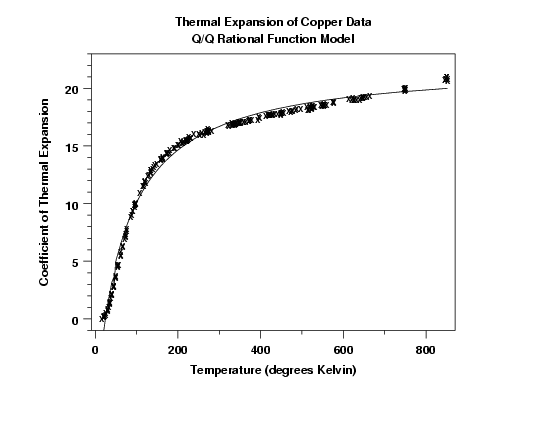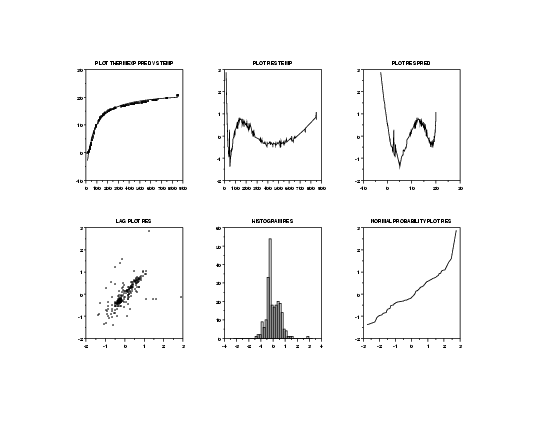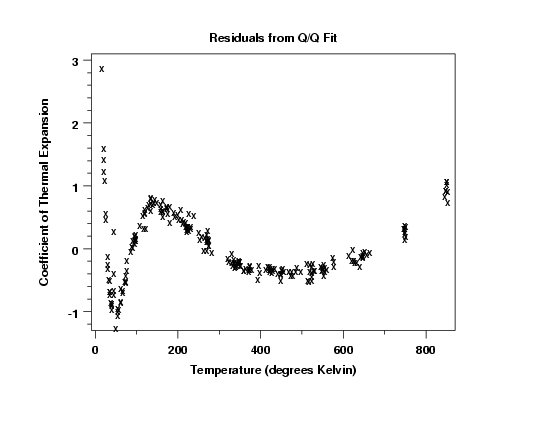4.6. Case Studies in Process Modeling
4.6.4. Thermal Expansion of Copper Case Study
4.6.4.4. |
Quadratic/Quadratic Rational Function Model |
Temp THERMEXP ---- -------- 10 0 50 5 120 12 200 15 800 20The coefficients from the preliminary linear fit of the five points are:
A0 = -3.005450 A1 = 0.368829 A2 = -0.006828 B1 = -0.011234 B2 = -0.000306
Parameter Estimate Stan. Dev t Value A0 -8.028e+00 3.988e-01 -20.13 A1 5.083e-01 1.930e-02 26.33 A2 -7.307e-03 2.463e-04 -29.67 B1 -7.040e-03 5.235e-04 -13.45 B2 -3.288e-04 1.242e-05 -26.47 Residual standard deviation = 0.5501 Residual degrees of freedom = 231The regression yields the following estimated model. $$ \hat{y} = \frac{-8.028 + 0.508x - 0.007307x^{2}} {1 - 0.00704x - 0.0003288x^{2}} $$
Looking at the fitted function with the raw data appears to show a reasonable fit.
The plot of the residuals versus the predictor variable temperature (row 1, column 2) and of the residuals versus the predicted values (row 1, column 3) indicate a distinct pattern in the residuals. This suggests that the assumption of random errors is badly violated.
The full-sized residual plot clearly shows the distinct pattern in the residuals. When residuals exhibit a clear pattern, the corresponding errors are probably not random.




